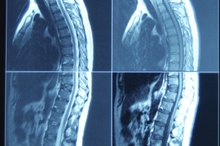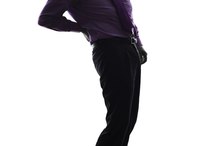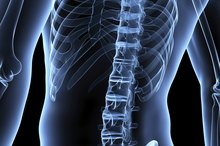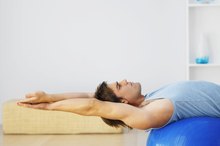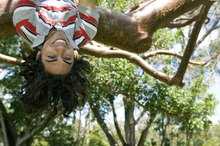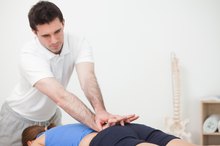Do Inversion Tables Work for Back Pain?
You may not realize how much you rely on your back functioning properly until it’s in pain, turning simplest of tasks into strenuous labor. Among the various ways to treat back pain, inversion therapy treatment is an increasingly popular way of curbing such problems 2.
If you are experiencing serious medical symptoms, seek emergency treatment immediately.
The Energy Center reported a study performed by New Castle University that showed frequent use of an inversion table allowed 75 percent of back pain sufferers to avoid invasive treatments such as surgery 1.
In inversion therapy, you lie on what is called an inversion table and hang either partially or completely upside down, promoting traction on the spine 2. Centuries ago, Hippocrates -- known as the father of medicine -- used this type of treatment by hanging patients upside down on ladders. Thankfully, inversion tables used today are much more comfortable and safer than the ladder. They are used by chiropractors, physical therapists and can be purchased to use in your home.
About the Spine
Your spine is made of separate bones called vertebrae. Between each vertebrae you have discs filled with nerves and fluid. Discs provide padding to prevent vertebrae from grinding together. As time goes on, gravity, exercise and poor posture cause the spine to take an unnatural curve, putting pressure on the discs and causing pain. Inversion tables work by reversing the direction in which gravity pulls your body, stretching your spine in the opposite direction and relieving the pressure while relieving pain.
- Your spine is made of separate bones called vertebrae.
- Between each vertebrae you have discs filled with nerves and fluid.
The Accordion Effect
Can an Inversion Table Help With Bulging Disks?
Learn More
Fluid can also build up in the discs in the spine, causing inflammation and discomfort. You can use the inversion table by starting in a horizontal position and rocking slowly, as though you are on a teeter-totter. This rocking movement has an accordion effect on the spine, milking the built-up fluid out of the discs taking pressure off the spine.
Reversing Spine Problems
Traction therapy using inversion tables helps reverse negative effects aging and gravity have on the spine. It can also reduce many other ailments, such as scoliosis, a condition in which the spine becomes more curved than normal. Sciatica, pain in the hip and legs due to pinched nerves in the lower areas of the spine, can also be treated with spinal traction using the inversion table. So, too, can lordosis, a condition in which the spine has a curve that is the opposite than normal.
- Traction therapy using inversion tables helps reverse negative effects aging and gravity have on the spine.
- It can also reduce many other ailments, such as scoliosis, a condition in which the spine becomes more curved than normal.
Contraindications
What Are the Benefits of Inversion Boots?
Learn More
There are some contraindications for using the inversion table. The act of hanging upside down does several things, increasing blood flow to the head and causing more pressure in the head and eyes. Therefore, it shouldn’t be used if you suffer from glaucoma or retinal detachment, or if you have blood pressure or circulatory issues.
Due to the stretching effect inversion tables have on the body, you should refrain from use if you have unhealed hernias, fractures or spinal injuries .
- There are some contraindications for using the inversion table.
- Due to the stretching effect inversion tables have on the body, you should refrain from use if you have unhealed hernias, fractures or spinal injuries .
Related Articles
References
- Energy Center; Medical Studies on Inversion Therapy
- Sports Injury Clinic; What is Inversion Therapy?
- Spine Universe; Turning Back Pain and Sciatica Upside Down
- Wegner I, Widyahening IS, Van tulder MW, et al. Traction for low-back pain with or without sciatica. Cochrane Database Syst Rev. 2013;(8):CD003010. doi:10.1002/14651858.CD003010.pub5
- McMonnies CW. Intraocular pressure and glaucoma: Is physical exercise beneficial or a risk?. J Optom. 2016;9(3):139–147. doi:10.1016/j.optom.2015.12.001
- Chronic Back Pain. Health Policy Institute. https://hpi.georgetown.edu/backpain/. Published February 13, 2019.
- Kong L, Tian W, Cao P, Wang H, Zhang B, Shen Y. Predictive factors associated with neck pain in patients with cervical disc degeneration: A cross-sectional study focusing on Modic changes. Medicine (Baltimore). 2017;96(43):e8447. doi:10.1097/MD.0000000000008447
Writer Bio
Jeff Herman began his journalism career in 2000. An experienced, award-winning sportswriter, his work has appeared in "The Washington Post," "ESPN the Magazine" and the "Boston Herald," among other publications. Herman has a Bachelor of Arts in journalism from West Virginia University.
